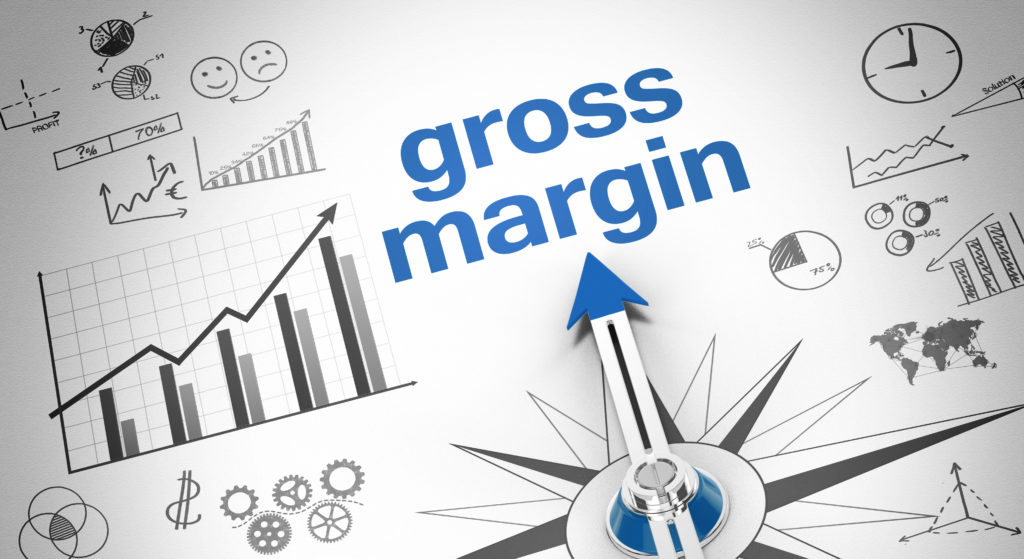If you run your own small business, you will have come across several different ways to evaluate your profitability. One strategy to increase your business profit margin is to use gross profit and gross profit margin. While they’re not likely to be the only figures you are using to health check your business, they are still important. If you’re looking to grow your business, one way of doing so is to increase your profit margin. Let’s start by learning about gross profit and how it differs from net profit.
Understanding Gross Profit
Gross profit, put simply, is how much money you make from selling your goods or services (revenue) when compared to how much you paid for it (cost of goods sold), without including fixed costs and overheads. This assumes that such expenses would be the same, regardless of the level of output on your enterprise, i.e. you could sell 500 or 5,000 of something, but the salaries you pay your staff is the same regardless; thus, it isn’t considered.
Gross Profit vs Net Profit
An important distinction to make is the difference between gross and net profit. Net profit includes the fixed costs that gross profit doesn’t include and is therefore sometimes considered a more truthful indicator of total profit.
Now we have a better understanding of these concepts, below are eight effective strategies to increase your business’ profit margin.
Determine and Analyse your Gross Profit Margin
Gross profit margins are calculated by dividing your gross profit by your revenue. This is then presented as a percentage. For example, if you were to buy $1,000 worth of clothing and sell it for $2,000 in one week, your gross profit margin would be 50 per cent. In other words, you are making 50 percent of the money you spent on inventory back as it is sold.
Both gross profit and your gross profit margin are important to keep track of. You can have an increasing gross profit, but a decreasing gross profit margin, which may present difficulties for your business.
In the above example, you would have a gross profit of $1,000 and a gross profit margin of 50 percent in week one. In week two, you buy $2,000 worth of clothing but only sell it for $3,500. Your gross profit is now $1,500, which looks good, but your gross profit margin has dropped to about 43 percent.
In general terms, the higher your gross profit margin, the more efficient your business is at creating income from a given amount of stock.
Benchmarking against business of a similar size and industry is advised to help give an understanding of your position and if and where improvements can be made.
Remove Unprofitable Products and Services
The products or services with the highest gross profit margin are the most valuable to your business. Calculate the gross profit margin on each of your products and services and analyse your gross margins over different business groups, product categories, suppliers or customer segments within your business. This exercise allows you to pinpoint both low margin or items generating a loss and profit-making services or products. Once you have identified your most profitable products or services you should concentrate on these. You will need to determine if the low margin lines should be deleted or reviewed for areas of improvement and then focus on the ones that are working.
Review Current Pricing Structure
Raising prices may be a daunting thought, especially if you haven’t done so before or do it rarely, however an incremental increase in your prices can make a significant impact on your gross profit. You should review your pricing on a regular basis and adjust your prices where appropriate.
In the above example, you spent $1,000 on the week’s stock, selling it for $1,200, making a gross profit of $200 and a gross profit margin of about 17 percent. You may decide that this is not significant enough and decide to increase your prices. You spend $1,000 on the same amount of stock but try to sell it for $1,500.
If successful, you would end up improving your gross profit margin to 50 percent; a significant improvement. However, if you found that fewer people were buying your products, you may only be able to sell half of your total stock, bringing your total revenue down to $750. This would end up being a negative gross profit of $250, or a 33 percent gross profit margin loss.
This is a simple example but improving your gross profit margin may be a case of finding the right balance.
Grow your Customer Base
Increasing your number of customers can help grow your business but is often an expensive channel to increase revenue when compared to the cost to retain existing customers.
The most cost-effective way to acquire new customers is to offer incentive to your current customers and encourage them to recommend you to colleagues and friends in their business network. Word of mouth is the most powerful (and cheapest) form of promotion.
Increase your Conversion Rate
Generating new leads is an integral strategy for business growth and it is important to know what percentage of leads are converted to a sale. One of the fastest and cheapest ways to grow your business’ profit is to increase sales conversion. Follow up every inbound enquiry received because you never know what it may eventuate into.
Reduce your Inventory
An efficient way to streamline your business and improve cash flow is to audit inventory and weed out slow-moving, expired or discontinued items. Making more frequent orders allows you to compare prices and take advantage of seasonal clearance or overstock discounts.
Decrease your Overall Direct Costs
Implementing strategies to decrease your direct costs can have a significant impact on your gross margin. Negotiate better prices or discounts on everything you buy ensuring that the quality is not compromised. Eliminate unnecessary purchases to reduce overspending.
Reduce your Overheads
Overhead expenses often have a way of edging up over time. Ensuring that you undertake regular reviews of your overheads can be a simple and efficient way of improving your net profit. Benchmarking your business against similar businesses in your industry may highlight areas for improvement.
Your Arabon accountant can help you to better understand your business’ gross profit and calculate your margin. They will walk you through the most appropriate strategies to grow yours depending on your individual business situation. Call us on 1300 ARABON or visit our website.






